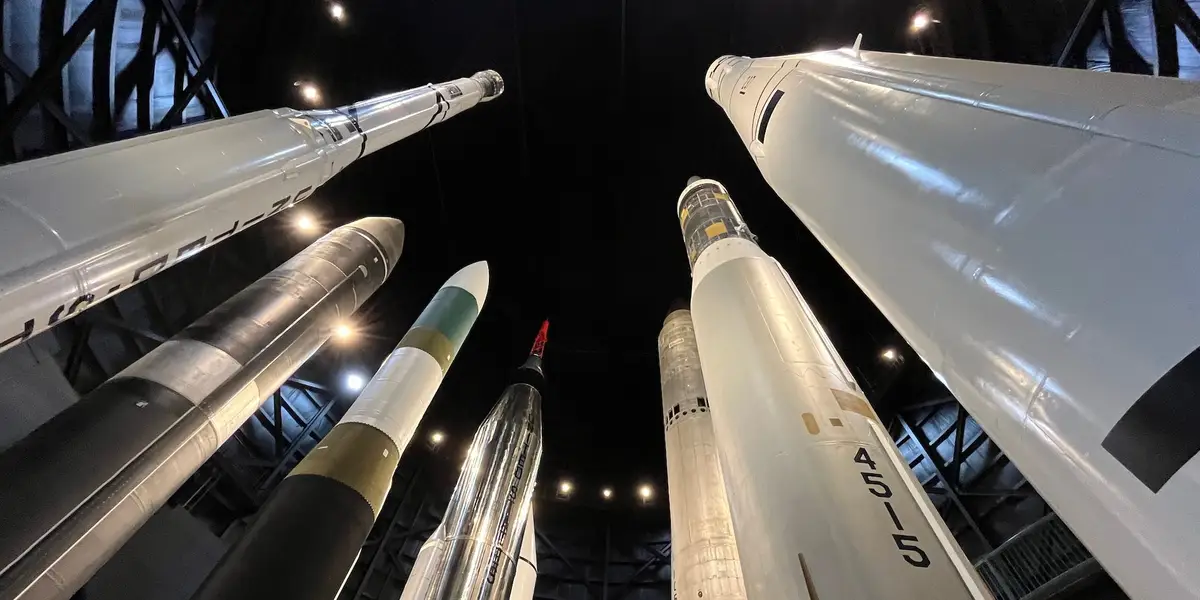Copyright Business Insider

The museum's collection includes Minuteman IA and III, Titan I and II, Jupiter, and Thor missiles, which served as nuclear deterrents at various points in US history. The 140-foot-tall gallery, designed to look like a missile silo, features a balcony walkway to view the enormous missiles from above. Standing at ground level showed me just how enormous they are. The first Minuteman ICBM system, known as Minuteman I, became operational in 1962 during the Cuban Missile Crisis. Minuteman II missiles followed in 1965. Kept on constant alert in underground silos and equipped with 1.2 megaton nuclear warheads, the missiles could travel at 15,000 miles per hour and reach targets anywhere in the world in under 30 minutes. The Minuteman II missile procedures trainer, which the museum acquired from Ellsworth Air Force Base in South Dakota in 1994, is a model of a real Launch Control Center that would have been used to deploy nuclear missiles during the Cold War. Crew members practiced for scenarios such as missile launches, security emergencies, and equipment failures with simulations that instructors programmed into computers. The trainees' personal lives were also scrutinized through a "personnel reliability program" to ensure that they were up to the job and could be trusted with part of America's nuclear arsenal. The two consoles with keyholes were built 12 feet apart so that no one person could turn both keys at the same time to launch the missiles. The chairs also featured seatbelts in case the facility was attacked. Silo-based missiles make up one-third of the US nuclear triad, along with bombers and ballistic-missile submarines. The Air Force Global Strike Command maintains around 400 silo-based Minuteman III ICBMs at three Air Force bases in Wyoming, Montana, and North Dakota, according to the Air Force Nuclear Weapons Center. Minuteman III missiles are set to be replaced with the LGM-35 Sentinel, also known as the Ground Based Strategic Deterrent, in the 2030s, as some military leaders have called for the aging technology to be modernized.



